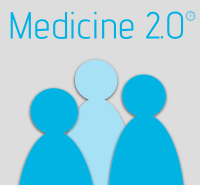Smart Food: Identifying Calories of Meals Using Smartphone to Inform the Development of a Personalized Messaging System for Obesity Prevention and Management
|
If you are the presenter of this abstract (or if you cite this abstract in a talk or on a poster), please show the QR code in your slide or poster (QR code contains this URL). |
Abstract
Background: Obesity is a global public health issue that needs to be further addressed. At present there is a lack of research evidence in personalised messaging in mobile applications for obesity prevention and management. One of the main challenges is the accurate estimate of calories of meals and individuals’ calorific intakes. There is also a lack of evidence indicating whether novices, peers and family members can provide accurate tailored feedback on calorie intake and nutrition. Before developing a mobile application with these features, there is a need to complete a feasibility study.
Objective: To determine the feasibility of novices and nutrition experts accurately identifying calories of meals from photographs as taken on a smartphone, and whether it can be used to develop a personalised messaging system for obesity prevention and management using a mobile application.
Methods: This study was an experimental design using a quantitative online survey with 24 participants, consisting of 12 experts in nutrition and/or dietetics, and 12 non-experts. For the non-expert group, participants attended a session, where a Registered Nutritionist gave a brief outline of estimating calories (20mins; short training), and then the participants completed an online survey. The online survey consisted of three sections, 1. demographics of the participants (e.g. gender, age); 2. photographs; 3. confidence levels (e.g. how confident were you estimating the calories from the photographs?). The photograph section consisted of 15 photographs of meals, which consisted of five breakfasts, five lunches, and five dinners. For each of the 15 meals, the participants were required to view the photographs and then answer the following question: “From viewing the above photograph, enter the number of calories you consider is in this meal? ___________Kcal OR ___________KJ”. The expert group did not receive training but completed the online survey. One month later, both the expert and non-expert groups completed the same online survey for the second time. Data was analysed using SPSS version 21. Ethical approval was granted for this study.
Results: Findings revealed that the percentage difference between the estimated calories count in the meals against the actual number of calories was on average +55% (SD 79.9) for the non-expert group and only +8% (SD 15.1) for the expert group (t-test, P<0.001). Overall, there were no significant differences between the first and second surveys for both the expert and non-expert groups. Some individuals were significantly (t-test, P<0.05) more accurate in estimating calories both in the expert and non-expert groups.
Conclusions: This study has shown that experts in nutrition can estimate calories of meals using a photograph taken on a smartphone within +8% error, while non-experts with limited training were not successful (+55% error). When designing a personalized messaging system for obesity prevention and management using a mobile application, experts in nutrition but not non-experts can be included to estimate calories in foods from photographs as taken on a smartphone.
Objective: To determine the feasibility of novices and nutrition experts accurately identifying calories of meals from photographs as taken on a smartphone, and whether it can be used to develop a personalised messaging system for obesity prevention and management using a mobile application.
Methods: This study was an experimental design using a quantitative online survey with 24 participants, consisting of 12 experts in nutrition and/or dietetics, and 12 non-experts. For the non-expert group, participants attended a session, where a Registered Nutritionist gave a brief outline of estimating calories (20mins; short training), and then the participants completed an online survey. The online survey consisted of three sections, 1. demographics of the participants (e.g. gender, age); 2. photographs; 3. confidence levels (e.g. how confident were you estimating the calories from the photographs?). The photograph section consisted of 15 photographs of meals, which consisted of five breakfasts, five lunches, and five dinners. For each of the 15 meals, the participants were required to view the photographs and then answer the following question: “From viewing the above photograph, enter the number of calories you consider is in this meal? ___________Kcal OR ___________KJ”. The expert group did not receive training but completed the online survey. One month later, both the expert and non-expert groups completed the same online survey for the second time. Data was analysed using SPSS version 21. Ethical approval was granted for this study.
Results: Findings revealed that the percentage difference between the estimated calories count in the meals against the actual number of calories was on average +55% (SD 79.9) for the non-expert group and only +8% (SD 15.1) for the expert group (t-test, P<0.001). Overall, there were no significant differences between the first and second surveys for both the expert and non-expert groups. Some individuals were significantly (t-test, P<0.05) more accurate in estimating calories both in the expert and non-expert groups.
Conclusions: This study has shown that experts in nutrition can estimate calories of meals using a photograph taken on a smartphone within +8% error, while non-experts with limited training were not successful (+55% error). When designing a personalized messaging system for obesity prevention and management using a mobile application, experts in nutrition but not non-experts can be included to estimate calories in foods from photographs as taken on a smartphone.
Medicine 2.0® is happy to support and promote other conferences and workshops in this area. Contact us to produce, disseminate and promote your conference or workshop under this label and in this event series. In addition, we are always looking for hosts of future World Congresses. Medicine 2.0® is a registered trademark of JMIR Publications Inc., the leading academic ehealth publisher.

This work is licensed under a Creative Commons Attribution 3.0 License.



